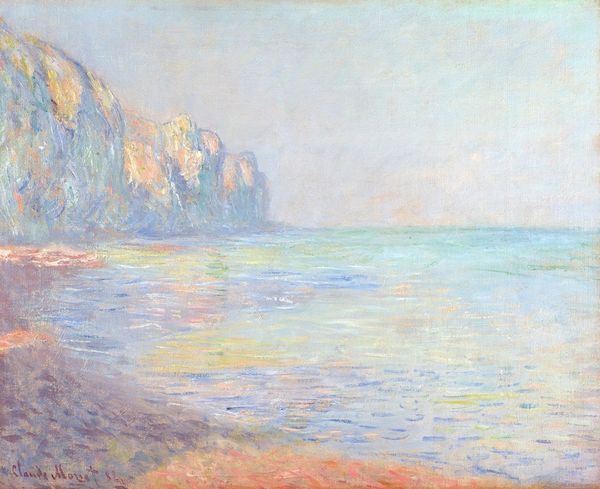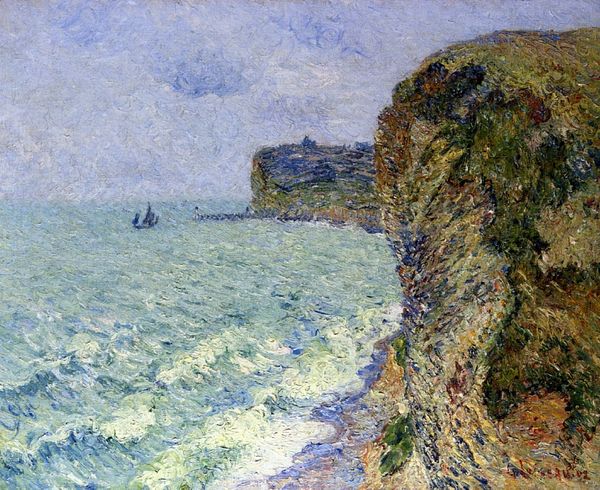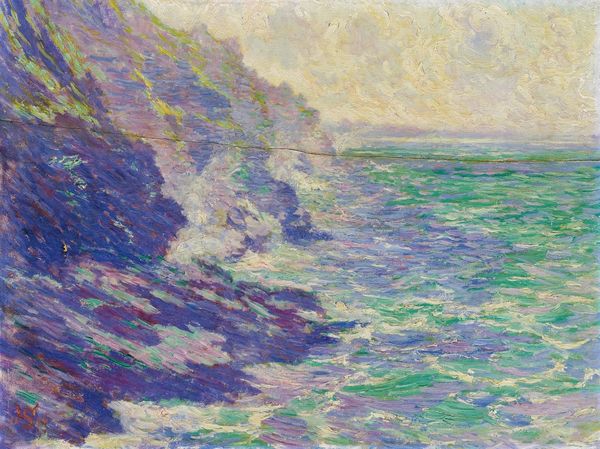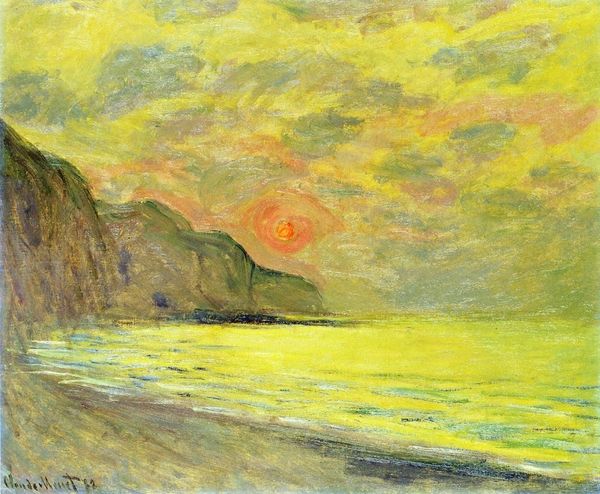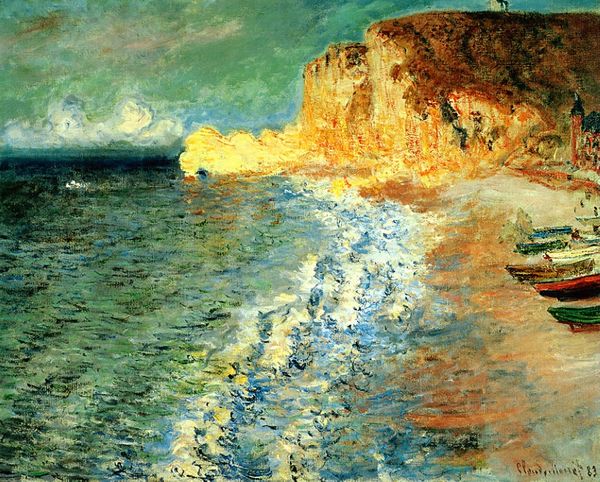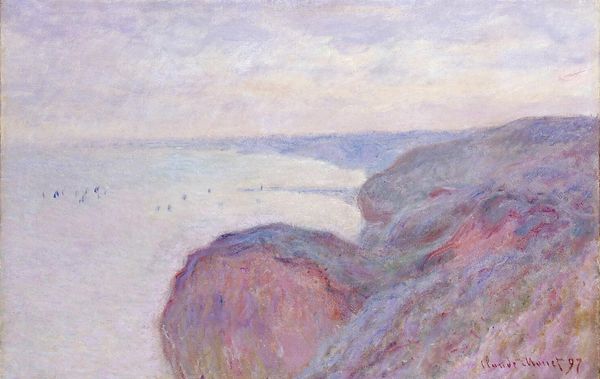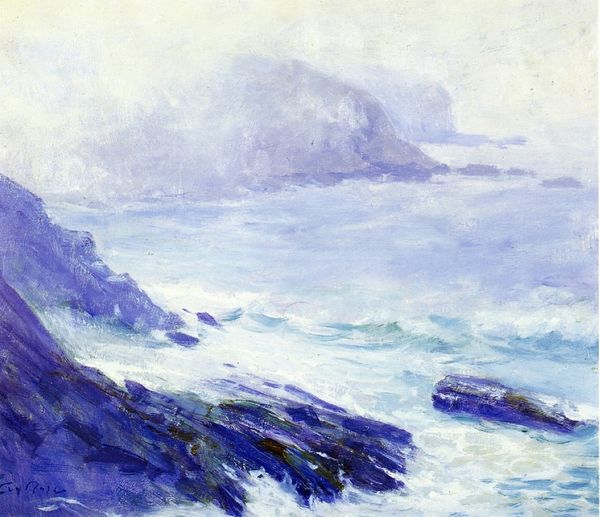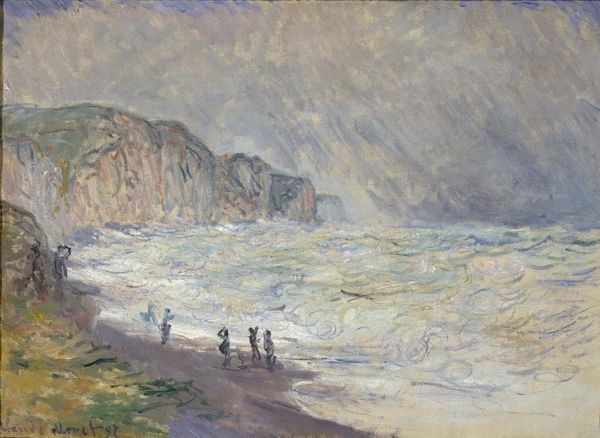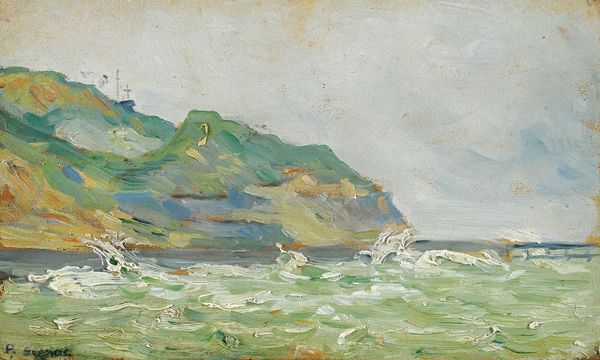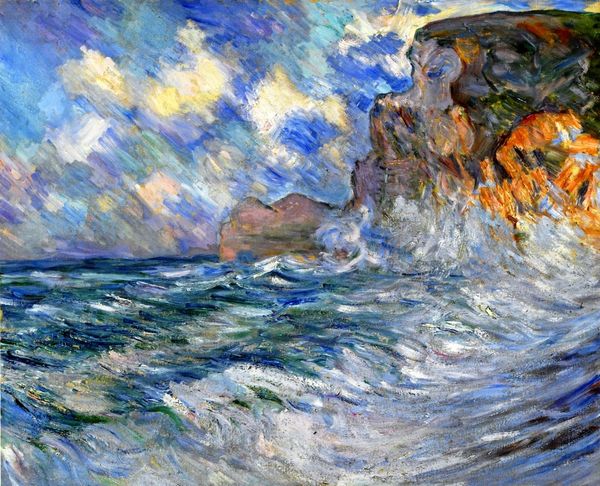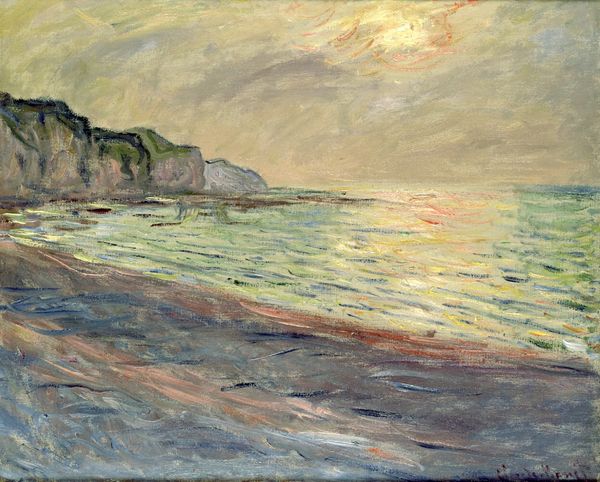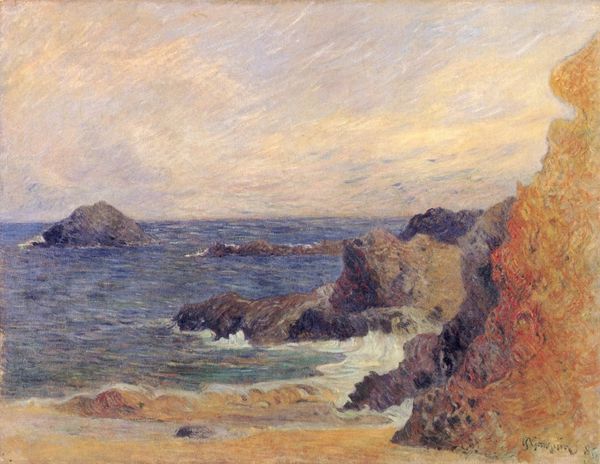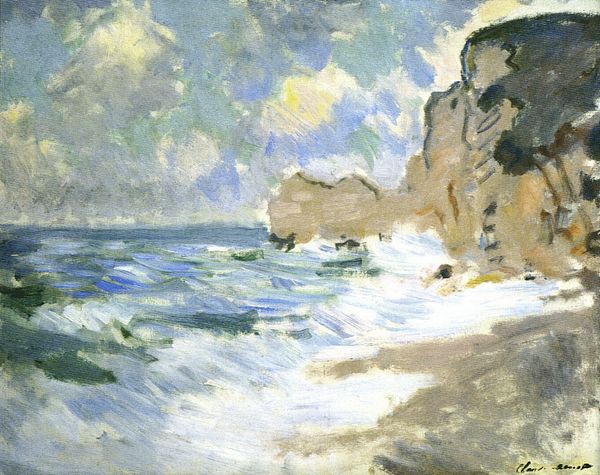
Copyright: Public domain
Claude Monet painted 'Cliff at Pourville' to capture the essence of the Normandy coast through light and color. This was at a time when the Impressionists were challenging traditional art by moving away from historical or mythological scenes, and instead painted modern life, landscapes, and the fleeting effects of light. Monet, like many impressionist artists, often chose landscapes to explore his interest in optics. 'Cliff at Pourville' is part of a series of paintings of the French coastline. The ocean takes center stage here, with its constant movement and atmospheric conditions. Monet was interested in how light reflects off the water and how that interplay affects our perception of color. The painting does more than reflect light, it also reflects the changing relationship between humans and nature. It invites us to consider how the natural world shapes our identities and experiences, and how our perception of it is influenced by the cultural and historical context in which we live. It's not just about the cliff or the sea; it's about our place within that landscape.
Comments
No comments
Be the first to comment and join the conversation on the ultimate creative platform.
